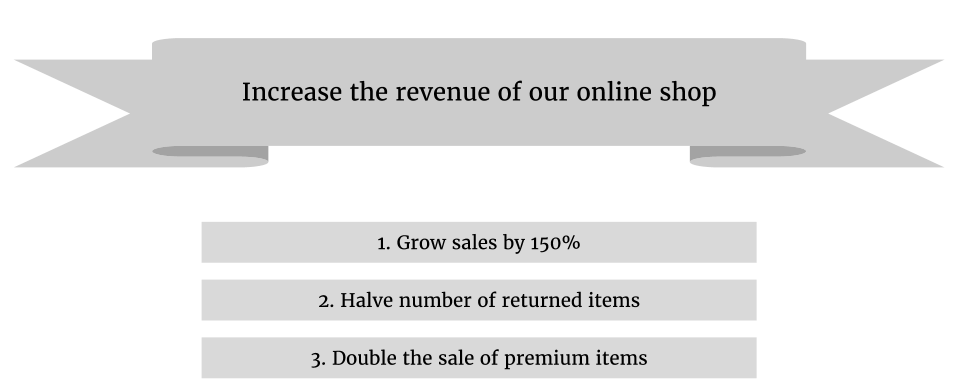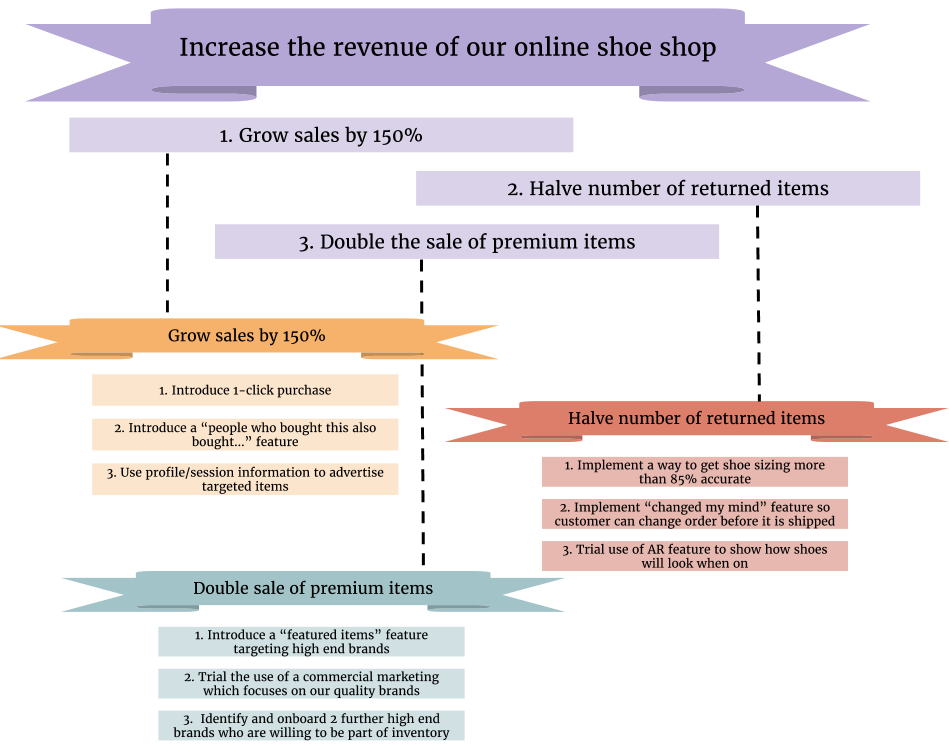OKRs were first introduced by Andy Grove at Intel Corp when he was CEO. They were then taken to Google by Grove's former colleague, John Doerr. Since then, many high-tech companies have used them including Uber, LinkedIn, Netflix, and so on.
The Objectives state the problem we're trying to solve, and the Key Results tell us if we're on the right track in terms of meeting the objective. We should look at OKRs as a way of aligning our people to our organization's purpose and its current strategic plan. They are a way of empowering our people to find solutions that will solve the challenges that we face.
The OKRs themselves should be challenging; we deliberately set the objective to stretch the team, making it only around 60% or 70% achievable.
So while OKRs are aspirational, we definitely shouldn't see them as a stick to beat our teams with. Instead, see them as a way to instill a sense of purpose and passion.
An example OKR for an online shop is shown as follows:

OKRs can be cascaded through to multiple teams. For instance, using the Objective and Key Results in the preceding diagram, we could cascade its three key results as objectives to three teams, as the following diagram shows:

This top-to-bottom connection between objectives, the strategic goals, and the organization's vision and mission helps our teams create alignment regarding purpose. Effectively, it gives them the why of what they are doing and any solution they create will consider the broader context.
OKRs are revisited quarterly. Therefore, each key result should be set up so that it's possible to achieve tangible results in fewer than three months. The success of the key results will inform us in terms of whether we continue with the objective or alter our course to try something different.
